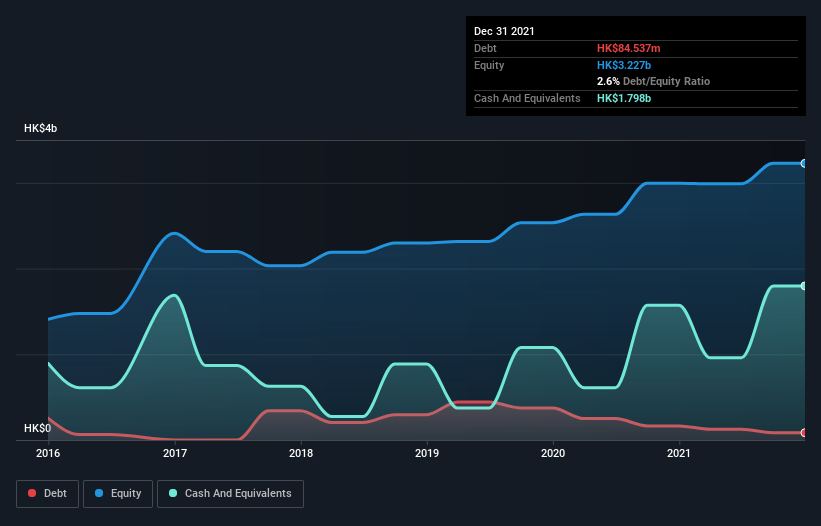[ad_1]
David Iben put it well when he said, ‘Volatility is not a risk we care about. What we care about is avoiding the permanent loss of capital.’ So it seems the smart money knows that debt – which is usually involved in bankruptcies – is a very important factor, when you assess how risky a company is. Importantly, Sundart Holdings Limited (HKG:1568) does carry debt. But should shareholders be worried about its use of debt?
Why Does Debt Bring Risk?
Debt and other liabilities become risky for a business when it cannot easily fulfill those obligations, either with free cash flow or by raising capital at an attractive price. If things get really bad, the lenders can take control of the business. However, a more frequent (but still costly) occurrence is where a company must issue shares at bargain-basement prices, permanently diluting shareholders, just to shore up its balance sheet. Of course, plenty of companies use debt to fund growth, without any negative consequences. When we examine debt levels, we first consider both cash and debt levels, together.
See our latest analysis for Sundart Holdings
What Is Sundart Holdings’s Debt?
As you can see below, Sundart Holdings had HK$84.5m of debt at December 2021, down from HK$164.7m a year prior. However, it does have HK$1.80b in cash offsetting this, leading to net cash of HK$1.71b.

How Strong Is Sundart Holdings’ Balance Sheet?
Zooming in on the latest balance sheet data, we can see that Sundart Holdings had liabilities of HK$3.80b due within 12 months and liabilities of HK$3.95m due beyond that. Offsetting these obligations, it had cash of HK$1.80b as well as receivables valued at HK$4.34b due within 12 months. So it actually has HK$2.33b more liquid assets than total liabilities.
This surplus liquidity suggests that Sundart Holdings’ balance sheet could take a hit just as well as Homer Simpson’s head can take a punch. On this view, lenders should feel as safe as the beloved of a black-belt karate master. Succinctly put, Sundart Holdings boasts net cash, so it’s fair to say it does not have a heavy debt load!
On the other hand, Sundart Holdings saw its EBIT drop by 9.2% in the last twelve months. That sort of decline, if sustained, will obviously make debt harder to handle. The balance sheet is clearly the area to focus on when you are analysing debt. But it is future earnings, more than anything, that will determine Sundart Holdings’s ability to maintain a healthy balance sheet going forward. So if you want to see what the professionals think, you might find this free report on analyst profit forecasts to be interesting.
Finally, a company can only pay off debt with cold hard cash, not accounting profits. While Sundart Holdings has net cash on its balance sheet, it’s still worth taking a look at its ability to convert earnings before interest and tax (EBIT) to free cash flow, to help us understand how quickly it is building (or eroding) that cash balance. Happily for any shareholders, Sundart Holdings actually produced more free cash flow than EBIT over the last three years. There’s nothing better than incoming cash when it comes to staying in your lenders’ good graces.
Summing up
While we empathize with investors who find debt concerning, the bottom line is that Sundart Holdings has net cash of HK$1.71b and plenty of liquid assets. And it impressed us with free cash flow of HK$608m, being 109% of its EBIT. So we don’t think Sundart Holdings’s use of debt is risky. When analysing debt levels, the balance sheet is the obvious place to start. But ultimately, every company can contain risks that exist outside of the balance sheet. These risks can be hard to spot. Every company has them, and we’ve spotted 3 warning signs for Sundart Holdings (of which 1 shouldn’t be ignored!) you should know about.
At the end of the day, it’s often better to focus on companies that are free from net debt. You can access our special list of such companies (all with a track record of profit growth). It’s free.
Have feedback on this article? Concerned about the content? Get in touch with us directly. Alternatively, email editorial-team (at) simplywallst.com.
This article by Simply Wall St is general in nature. We provide commentary based on historical data and analyst forecasts only using an unbiased methodology and our articles are not intended to be financial advice. It does not constitute a recommendation to buy or sell any stock, and does not take account of your objectives, or your financial situation. We aim to bring you long-term focused analysis driven by fundamental data. Note that our analysis may not factor in the latest price-sensitive company announcements or qualitative material. Simply Wall St has no position in any stocks mentioned.
[ad_2]
Source link







